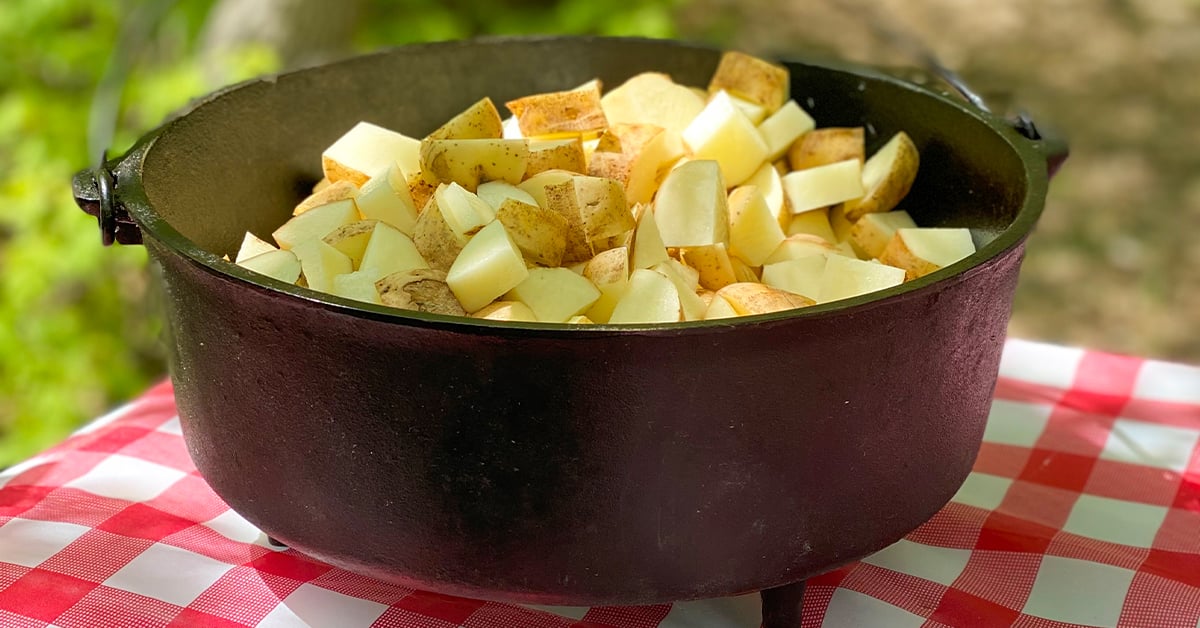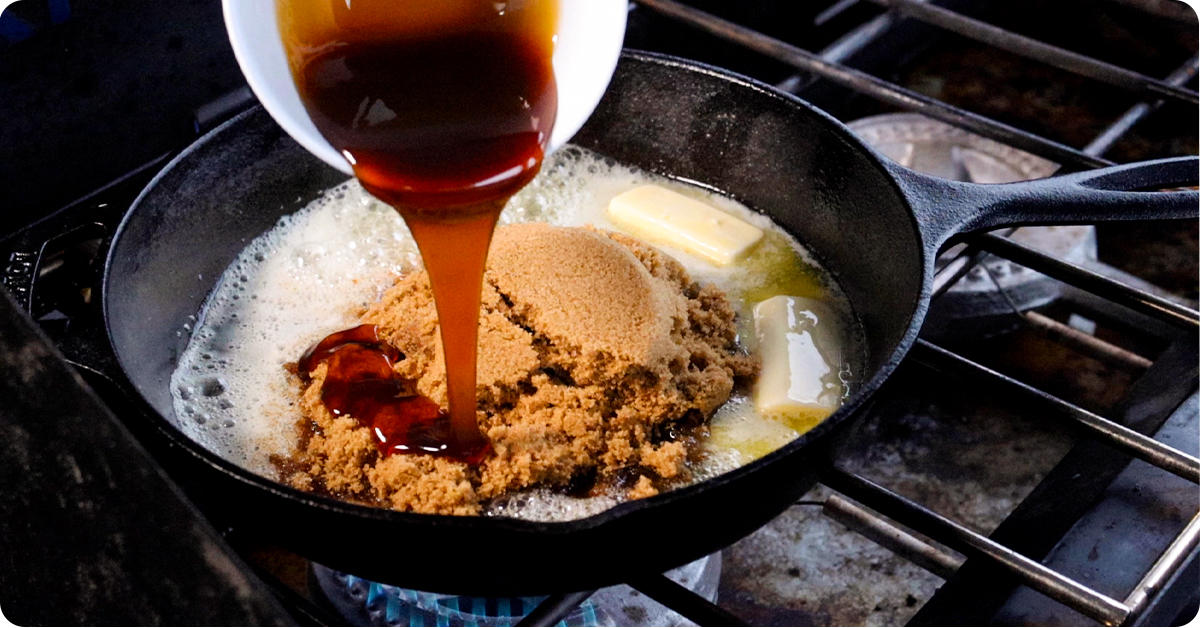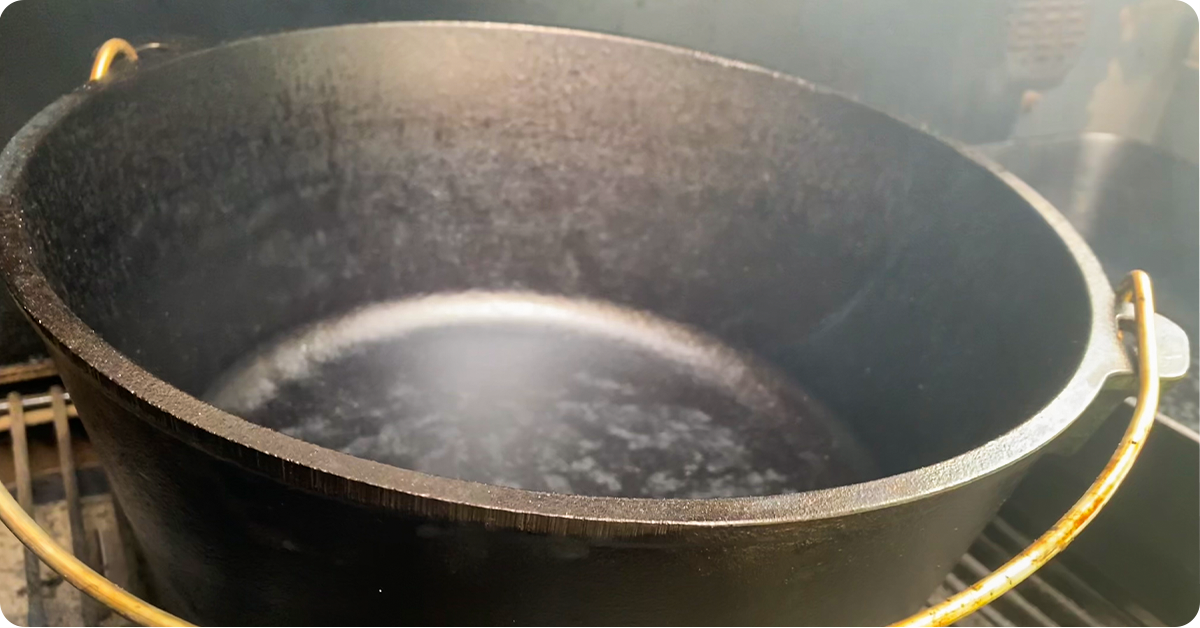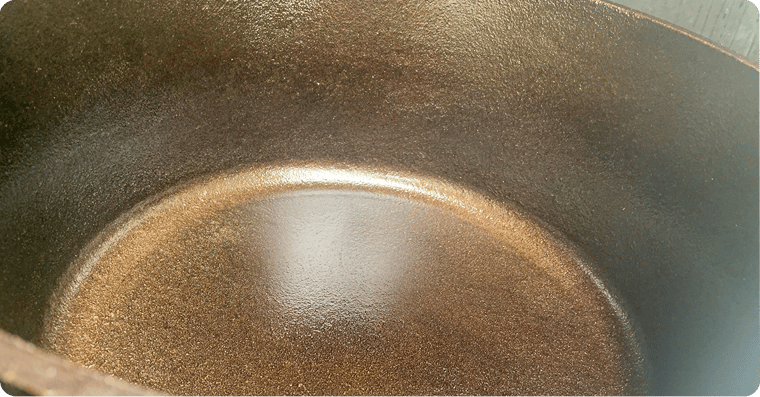
Cast iron pans, skillets and Dutch ovens are nostalgic pieces of cookware often passed down for generations. Thanks to their durability, these versatile tools will last for many years if they are properly maintained and “seasoned”.
If you are familiar with Dutch ovens or cast iron pans, chances are you’ve heard the term “seasoning,” but what does this really mean and why is it so important for the longevity of your cast iron cookware?
What is Cast Iron Seasoning?
Despite the term, “seasoning” your cast iron isn’t referring to the right amount of salt and pepper to add to your next dish. In fact, seasoning cast iron refers to a chemical process known as polymerization that results in the smooth, hardened surface you expect from your cast iron pans. Polymerization occurs when oils or fats are heated inside the cast iron. Once heated to a high enough temperature, these oils change from a wet liquid into a shiny, non-stick surface.
5 Reasons to Season Your Cast Iron Cookware
1. Rust-Prevention
Seasoning is essential for rust-prevention in cast iron cookware. Like any iron material, cast iron pans and dutch ovens are susceptible to rust if they are not properly cared for. Seasoning your cast iron helps seal the metal in a protective coating of polymerized oil that prevents water from getting trapped in any small grooves and rusting.
2. Non-Stick Cooking Surface
Seasoned cast iron is renowned for its non-stick properties. Pans and Dutch ovens that are properly seasoned will have a slick, glassy finish from the polymerized oil that allows foods to be easily prepared and enjoyed.

3. Easier Cleaning
Due to its non-stick surface, cast iron cookware that is properly seasoned will be easier to clean. With less food stuck to the pan, there is less scrubbing and work after the feast is over.
4. Improved Flavors
Cast iron that is seasoned will protect the flavor of your dishes. Un-seasoned pans can potentially rust or could lead to metallic flavors in your thoughtfully-prepared dishes.
5. Cookware Longevity
The best way to ensure the longevity of your cast iron cookware is by maintaining a good amount of seasoning on your pans, skillets and dutch ovens. Seasoning builds up over time the more you cook with it but establishing a good finish prior to the first use is the most important. Cast iron that is seasoned and maintained can last for generations.
Best Seasoning Oils
Any oil or fat can be used to season cast iron. However; each type of oil has its own smoking point and even flavor that will impact your cast iron seasoning. Pre-made oils and sprays such as cast iron conditioners by Camp Chef and Lodge. These sprays have a higher smoke point allowing them to leave a better seasoning finish that won’t chip or flake.
You can also season cast iron using common cooking oils found around your home. We recommend using unsaturated fats or oils that have a higher smoke point such as olive or canola oil. In the past, Lard was primarily used to season cast iron pans and dutch ovens due to its accessibility. However, lard and animal-based fats and oils are more likely to go rancid if you are not consistently using your cast iron cookware.
How to Season Cast Iron
Cast iron pans and Dutch ovens are available pre-seasoned or unseasoned. It is a good idea to season any new cast iron regardless of whther or not it is pre-seasoned.
Wash and Dry
Start by cleaning your cast iron pan or Dutch oven thoroughly. Scrub with warm water and a mild soap (only use soap on your cast iron before seasoning). Rinse and then completely hand-dry.
Apply Oil
Next apply a very thin layer of oil to your cast iron. Evenly coat your cookware inside and out. Be careful not to use too much oil as this could make your pans sticky.
Bake
Once the cast iron is oiled it’s time to bake. Place a large baking sheet or aluminum foil on the bottom oven rack. Situate your cast iron pan or dutch oven upside down on the top rack and then bake for one hour at 400-500°F depending on the smoke point of the oil you use. Let cool before removing.

Repeat
Repeat these steps until your cast iron has the seasoned finish you desire. Consider re-seasoning your cast iron regularly, especially if the cookware is not frequently used. Most expert cast iron chefs recommend three to four coatings of seasoning BEFORE the first use. After you’ve established this good base, simply build the seasoning from there by cooking with it.
Cleaning Tips to Maintain Your Cast Iron Seasoning
Once you've built up a good seasoning on your cast iron pans and Dutch ovens, it is important to maintain that seasoning. Properly cleaning and caring for your cast iron tools ensures your pan’s seasoning is always up to the task.
Avoid Metal Utensils
Metal utensils as well as steel and metal cleaning sponges can scratch away the hardened oil seasoning built up on your cast iron pans. These little knicks and scratches can lead to rust and affect the non-stick properties of seasoned cookware.
Limit Acidic Foods
Acidic foods can deteriorate a cast iron seasoning over time. Avoid making sauces that call for vinegar or other acidic foods. A simple tomato sauce once in a while is alright, but constantly using cast iron pans to cook these sauces could be detrimental to the season.
Drying Tips
Instead of towel drying, use a paper towel or allow heat to evaporate water from your cast iron. This ensures that no lint from a cloth towel is left behind in your cookware.

Cast Iron Cookware Essentials at IFA
With the proper seasoning and care, your cast iron cookware will continue to shine and serve you well for many years.
Let IFA’s outdoor cooking experts help you season and care for your cast iron pans. Pick up a new cast iron pan or Dutch oven from Lodge or Camp Chef to start enjoying some of our favorite recipes.
Information for this article was provided by Dan Jensen, IFA Foods and Outdoor Cooking Category Manager, and Adam Fox, IFA Creative Director.






